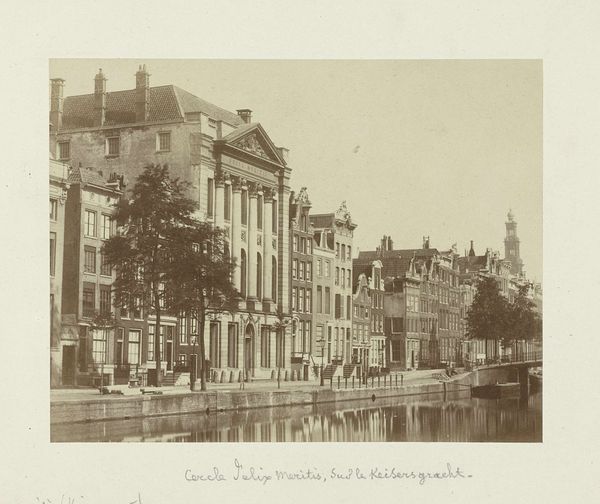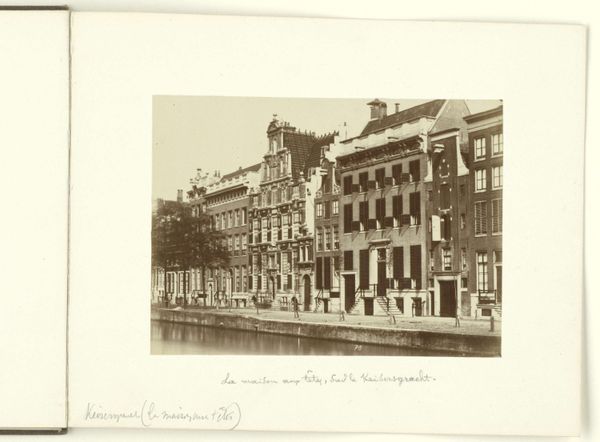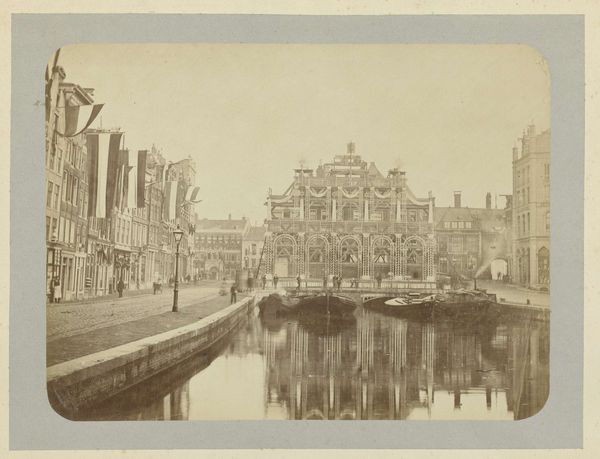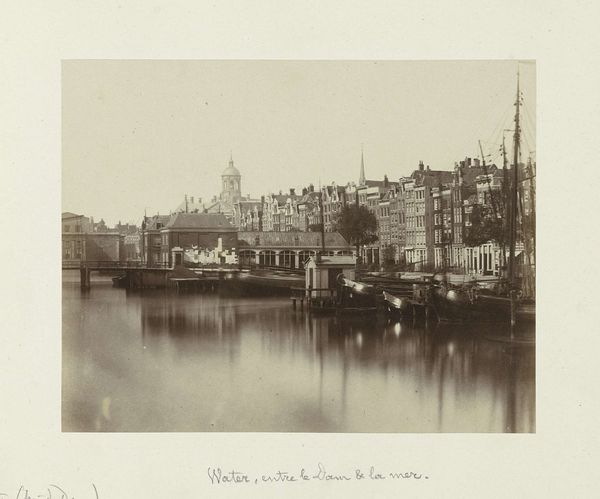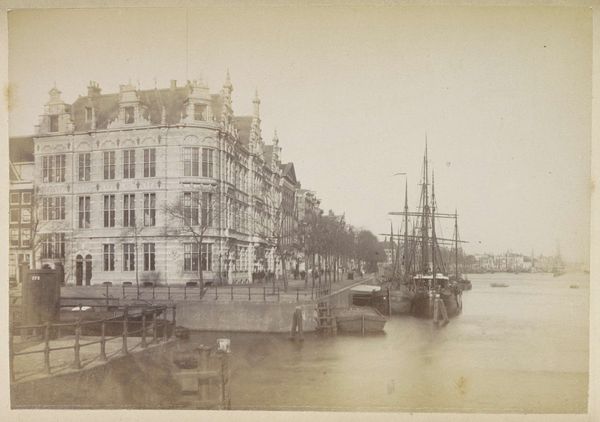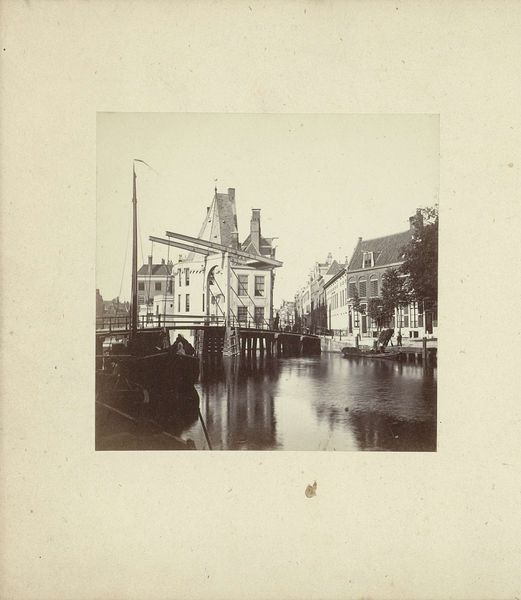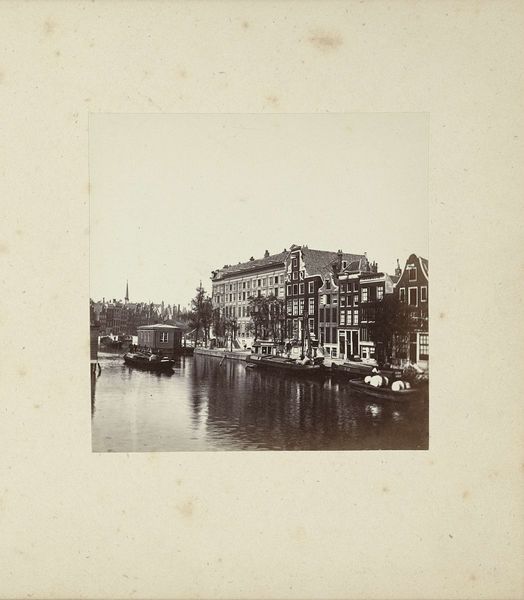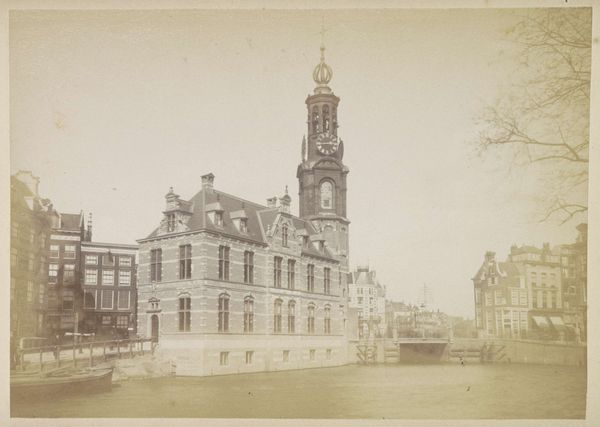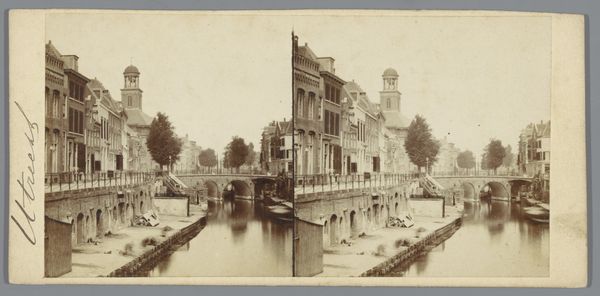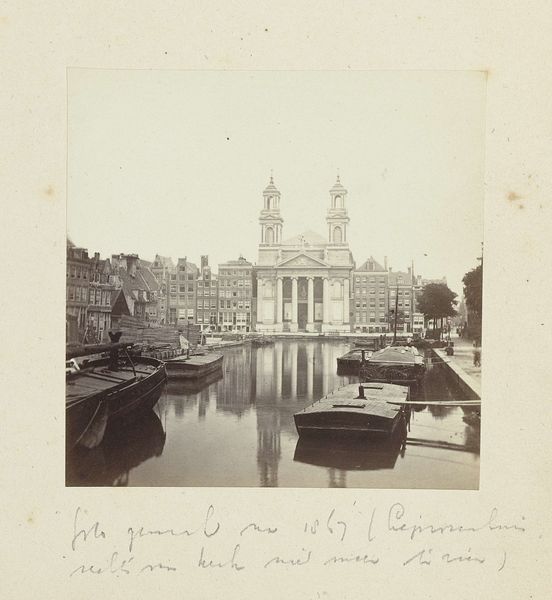
daguerreotype, photography
#
dutch-golden-age
#
landscape
#
daguerreotype
#
photography
#
orientalism
#
cityscape
#
realism
Dimensions: height 118 mm, width 158 mm
Copyright: Rijks Museum: Open Domain
Curator: What immediately strikes me about this image is its stillness. There's a quiet solemnity, isn’t there? The sepia tones amplify this feeling of a moment suspended in time. Editor: Absolutely. Today we’re looking at Pieter Oosterhuis’ daguerreotype, "Munttoren, Amsterdam, gezien vanaf het Rokin," placing us in Amsterdam before 1860. Given that the daguerreotype was still quite novel, its very existence hints at a shifting societal perspective. Curator: You can really see how light interacts with the architecture; Oosterhuis uses contrasts between light and shadow to highlight the building's textures and volumes, creating a wonderful sense of depth. It is much more than a technical marvel. Editor: The Munttoren itself carries significance. Once part of the Regulierspoort, it’s a powerful symbol of Amsterdam’s historical and economic importance, overseeing the waters of the Rokin which themselves speak to the city's legacy of trade and cultural exchange. How might the burgeoning photographic industry interact with Amsterdam's established status, particularly considering the rise of Dutch realism at that time? Curator: Interesting point! This view isn’t simply representational; the precision achieved through the daguerreotype provides the realism that would reinforce societal beliefs and hierarchies of seeing in this quickly changing context. Note the calm canal water; how the stillness acts as a mirror. Perhaps it’s not just reflecting Amsterdam, but also something of a collective ideal from the era. Editor: Agreed. I also wonder about who had access to this new technology. There's a certain tension here between the democratization of image-making and its potential to serve the established elite. How does this piece, a landmark captured with cutting-edge technology, comment on early capitalism? Curator: Viewing it now, what I really glean is the subtle visual interplay between light and shadow, highlighting structural depth. Editor: For me, it emphasizes a broader understanding of how urban environments impact social frameworks and visual comprehension. Both perspectives reveal significant insight into this serene snapshot of Amsterdam.
Comments
No comments
Be the first to comment and join the conversation on the ultimate creative platform.
